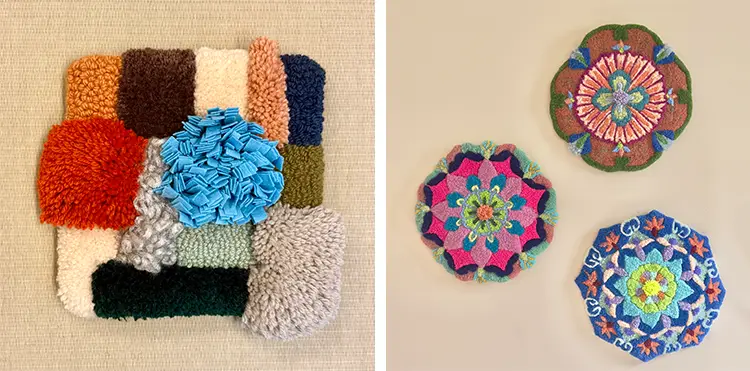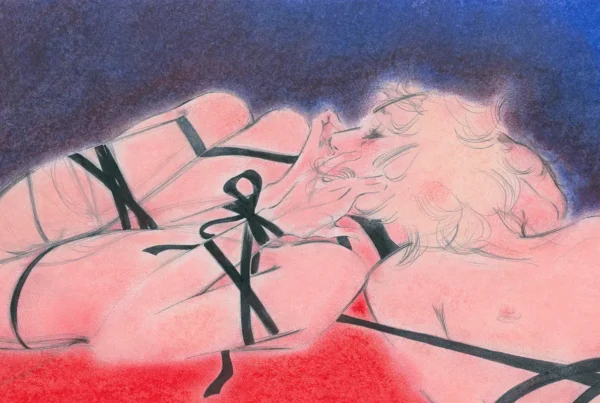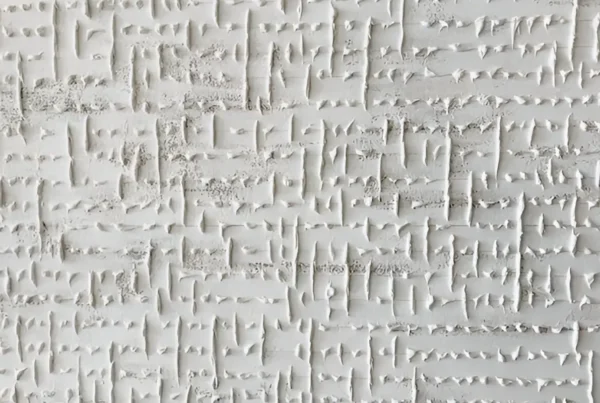“Letting go of something so significant created space in my life — and that space was filled by something equally meaningful.”
Weaving Sound into Fiber
A dynamic creative force who has moved between stages and studios, Yayoi Filipski has emerged as a striking voice in the evolving world of textile art. Born in Osaka and now based in New York City, Filipski’s work bridges the precision of traditional Japanese aesthetics with the vibrant pulse of contemporary design. Known previously for her accomplished career as a jazz vocalist, composer, and songwriter spanning more than two decades across Japan and the United States, she has recently redefined her practice by stepping into the world of tufted textile art. Through her studio, SumiYuri, located in the heart of downtown Manhattan, she explores storytelling through fibers, color, and handcrafted texture.
Filipski’s artistic sensibility is deeply rooted in her upbringing and cultural heritage. For 17 years, she trained and performed in the operatic traditions of Japanese singing, a discipline that infused her with an enduring appreciation for nuance, structure, and emotional delivery. That background remains evident in her textile work, where intricate patterns and symbolic motifs evoke the reverence of ancient forms while engaging with the modernity of New York’s downtown spirit. Her pieces reflect a creative philosophy shaped by decades of musical expression and reimagined through tactile mediums.
The pandemic played a pivotal role in redirecting Filipski’s artistic trajectory. In the stillness of lockdown, she turned inward and began reshaping her domestic environment—a process that unveiled a new creative language. The closure of a beloved Tibetan rug store in Tribeca, a place significant to her family, became a moment of reckoning. Confronted with the absence of that warmth in her home, she considered the possibility of designing and crafting rugs herself. The shift was more than just an aesthetic pivot; it became an emotional passage from sound to material. With tufting guns in hand and design sketches in mind, she committed fully to the craft, eventually partnering with a Turkish rug company to distribute her creations globally.
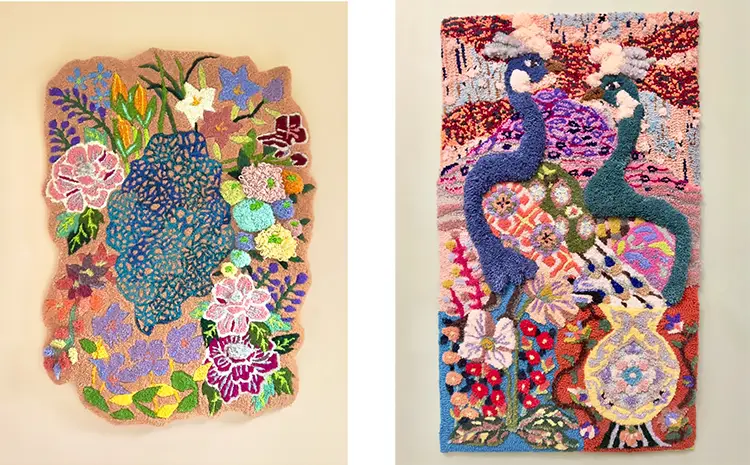
Yayoi Filipski: A Song Transformed Into Thread
Filipski’s transition from stage to studio was not just a shift in medium—it was a profound internal metamorphosis. Music had long been her language, a vehicle for personal and artistic release. But as she immersed herself in the process of tufting, she began to feel the melodies of her past dissolve into textures of a new expression. The family home she once filled with sound now became a canvas for design. She repainted, renovated, and transformed her space piece by piece, until the only missing element was the rug beneath her feet. When she finally stepped into rug-making, it wasn’t with hesitation, but with the assuredness of someone who had always responded intuitively to the call of creativity.
This pursuit came at a personal cost—her decision to part ways with her beloved piano was one of the most emotionally intense moments of her journey. Having composed and performed beside that instrument for years, letting it go symbolized not just a change in tools, but in identity. Tears marked the departure, but what followed was a sense of renewal. Her rug designs caught the attention of international collaborators, and soon her visions began materializing into products available worldwide. What had started as an act of home improvement had evolved into a bold new chapter.
Filipski’s current studio practice is anything but rigid. Each work is born from moments of presence, focus, and internal dialogue. There are days when distractions—emails, social media, even hormonal fluctuations—threaten her rhythm, but she approaches them with empathy and self-awareness. Instead of forcing productivity, she allows the entirety of her lived experience to shape her output. For Filipski, creative energy doesn’t flow in a linear path. It spirals, pauses, and surges—mirroring the unpredictable rhythms of both jazz and life itself. She believes that even off days hold hidden potential, often leading to richer and more honest expressions in her art the following day.
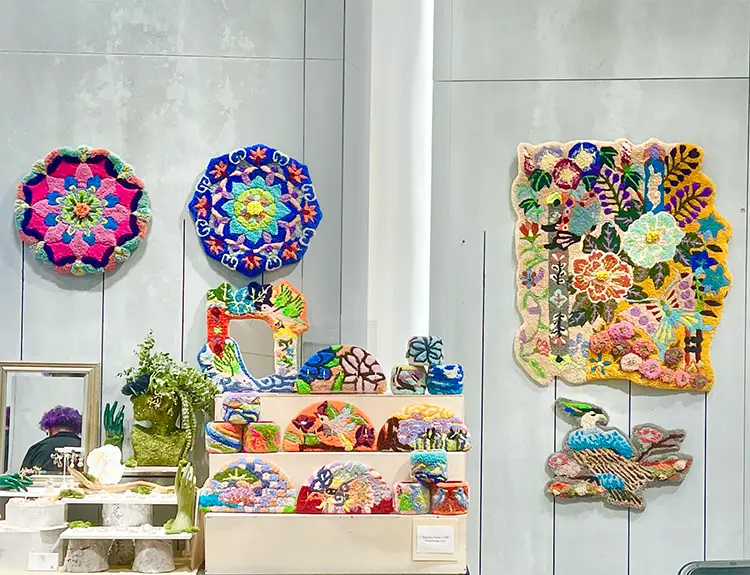
Echoes of Two Worlds
Filipski’s work is an intricate dance between two distinct cultures. Her designs often carry the elegant geometry of traditional Japanese motifs, yet they also pulse with the unpredictability and freedom characteristic of downtown New York. This duality is not a conflict for her—it is the core of her artistic voice. She doesn’t approach balance as a fixed equation but rather as an ongoing conversation between heritage and innovation. Each design becomes a space where identity, history, and personal truth coexist without needing to reconcile or compete.
In her eyes, the creative process must begin with authenticity. She believes that artists are not obligated to send only positive messages. What matters most is the depth of honesty behind the work. Whether the tone is celebratory or somber, she views emotional sincerity as the bridge that connects artist and audience. By confronting the world with unfiltered expression, Filipski feels artists can trigger reflection and, perhaps, transformation. Her tufted pieces aren’t passive décor—they carry weight, intention, and often, a call to recognize shared emotional experiences.
A specific work that holds deep meaning for Filipski features two birds, rendered through vibrant textile compositions, standing side by side and clasping hands in mutual support. To her, this image encapsulates the essence of connection, trust, and resilience in a chaotic world. The piece embodies her broader philosophy: that even amidst disarray, life finds form and meaning through relationships. It is a poetic articulation of empathy—both a personal reflection and a message for future generations. Through color and texture, the artwork speaks not just to aesthetics, but to the very purpose of human connection.
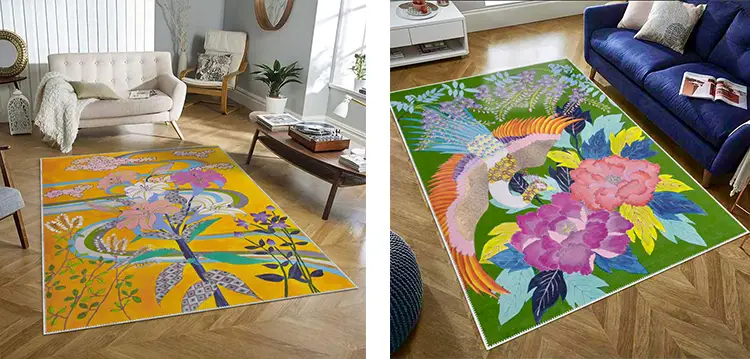
Yayoi Filipski: The Thread Between Encounters
Encounters—whether fleeting or foundational—hold great creative power for Filipski. From conversations with influential figures in the arts to spontaneous meetings with professionals across industries, she views every human connection as a potential catalyst for inspiration. Recently, she met a Hollywood film editor in Osaka, a lighting designer involved in CHANEL events in Kyoto, and Sybil Yurman, the co-founder of the jewelry brand David Yurman, in New York. These interactions aren’t merely brushes with prestige; they resonate with her on a deeply human level. She sees them as mirrors, reminders of the strength, grace, and courage embedded in others—and in herself.
This summer, Filipski is bringing her work to Harakado in Tokyo, a major milestone in her artistic evolution. The solo exhibition, organized in collaboration with Lemonlife, includes not just a showcase of her rugs and accessories but also immersive workshops inviting visitors into her creative universe. For her, this opportunity is more than a professional achievement—it’s a homecoming of sorts, a chance to reintroduce herself to Japan through the medium that now defines her. Positioned in a prime Tokyo location, the event connects her global journey with the local audiences that shaped her earliest inspirations.
In preparing for the exhibition, Filipski has emphasized the importance of sharing the tactile joy of rug-making. Participants in her workshops will use fine New Zealand wool to explore a craft that she describes as both meditative and empowering. Through this hands-on experience, she hopes visitors will gain not only technical skills but also a sense of emotional resonance. For Filipski, art isn’t just seen—it’s felt. Whether on a stage, in a studio, or through a tufted surface underfoot, her work continues to invite others into spaces where beauty and authenticity are always within reach.
